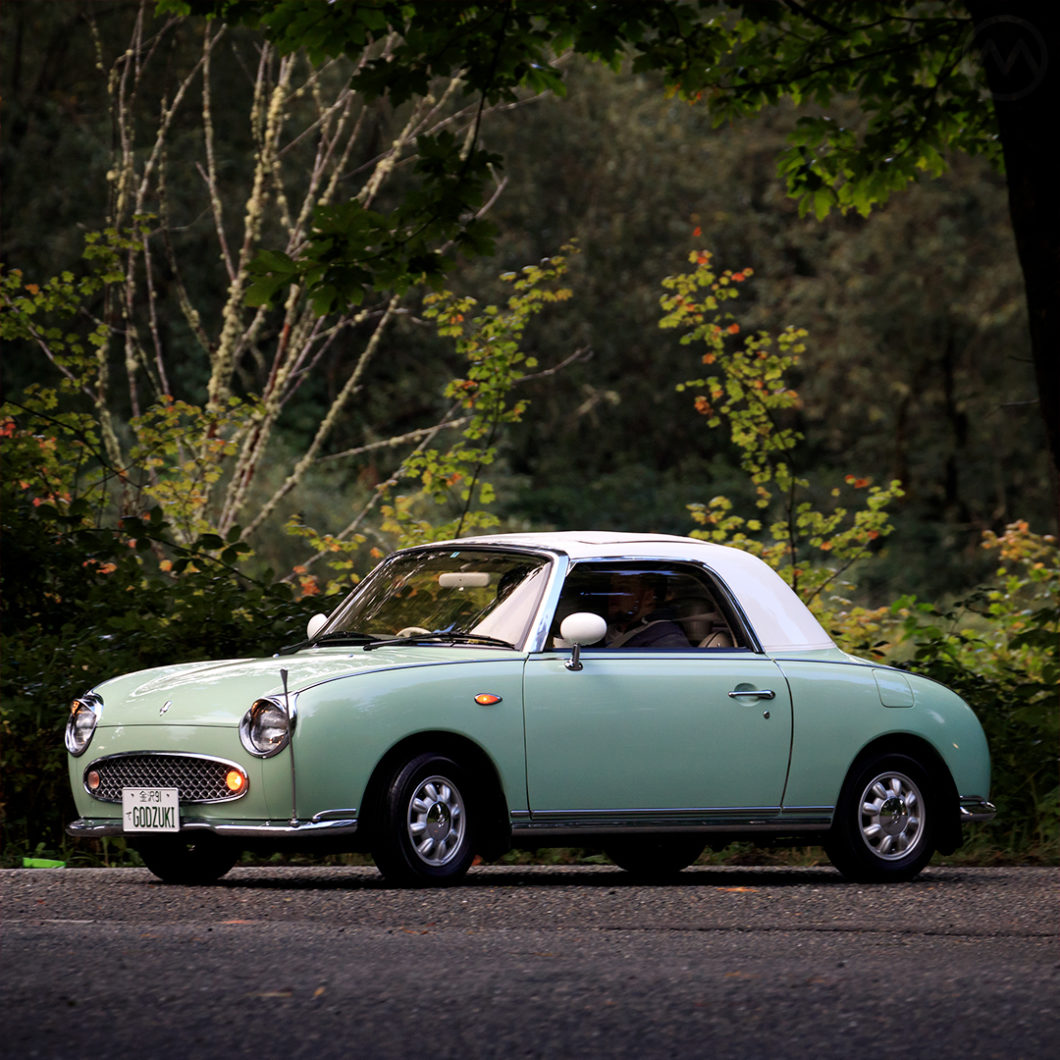People seeing a Nissan Figaro for the very first time are always charmed by those cute and happy looks. Few cars look so winsome and even fewer are capable of defying the forces of time, but the Figaro is a car the uninitiated can never seem to pin down. It’s full of 1950s cues, but it’s clearly a modern car. This, of course, is exactly what designer Naoki Sakai intended.
The last of Nissan’s “Pike” cars, the Figaro is also the most well-known of the retro-futuristic quartet and the most endearing. It’s as sought-after today as it was in 1991 when all 20,073 units were built. A production run of just 8,000 was initially planned, but demand proved so great that Nissan upped the quantity, and original buyers had to enter a lottery to get one. Today Figaros still draw questions, oohs and ahhs from curious non-car-people anywhere you park them.
While the “Pike” cars were meant only for Japan, but they were just too interesting not to grab global attention. After a long period of creative stagnation, they were a high-profile part of Nissan’s late eighties design renaissance, and they were nothing if not imaginative. They still look contemporary today, too, as all four were mash-ups of classic themes and modern design touches.
After the Be-1 (1987), Pao (early 1989) and S-Cargo (late 1989), the Figaro arrived in 1991. It was as unashamedly retro as the first three if not more so. Looking closely, it bears a resemblance to the Gutbrod Superior, and the Maico Champion, and Vespa 400, and the Autobianchi Bianchina, and on and on. All that was by intent.
Since most non-car people had little or no memory of those old cars, it was an original idea made out of other ideas and misty views of the past—but not cribbed from any single inspiration. It has been accurately described more than once as “postmodern.”
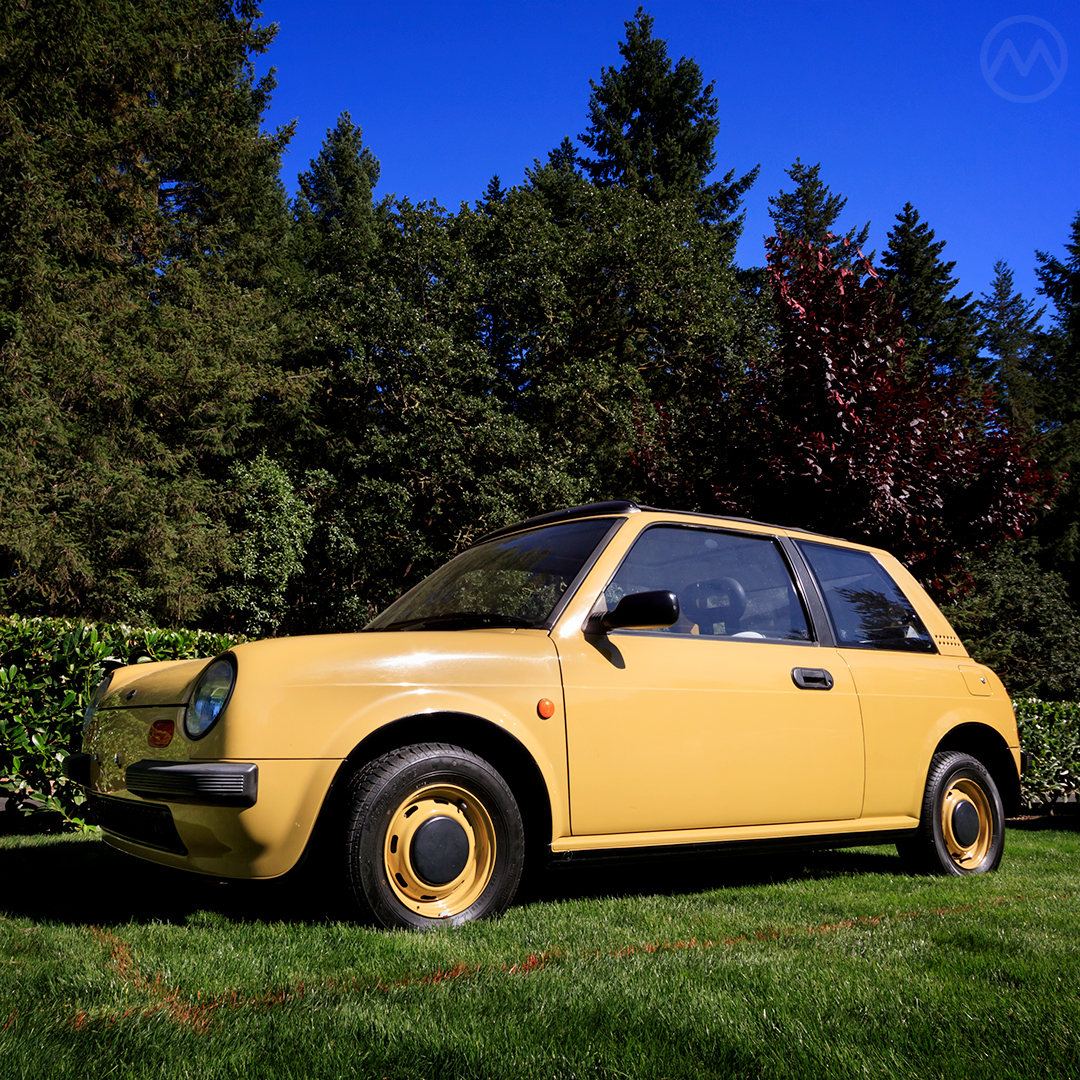
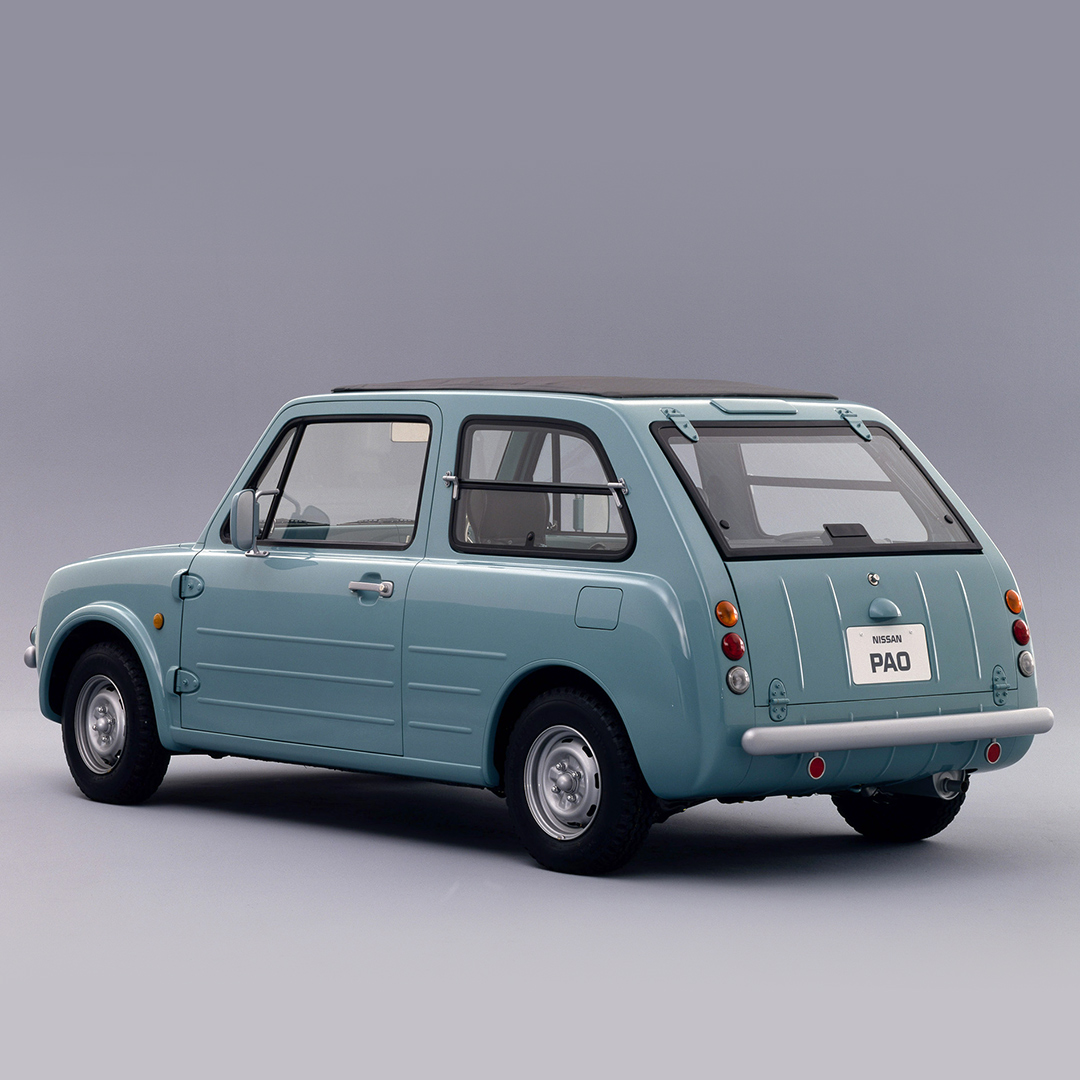
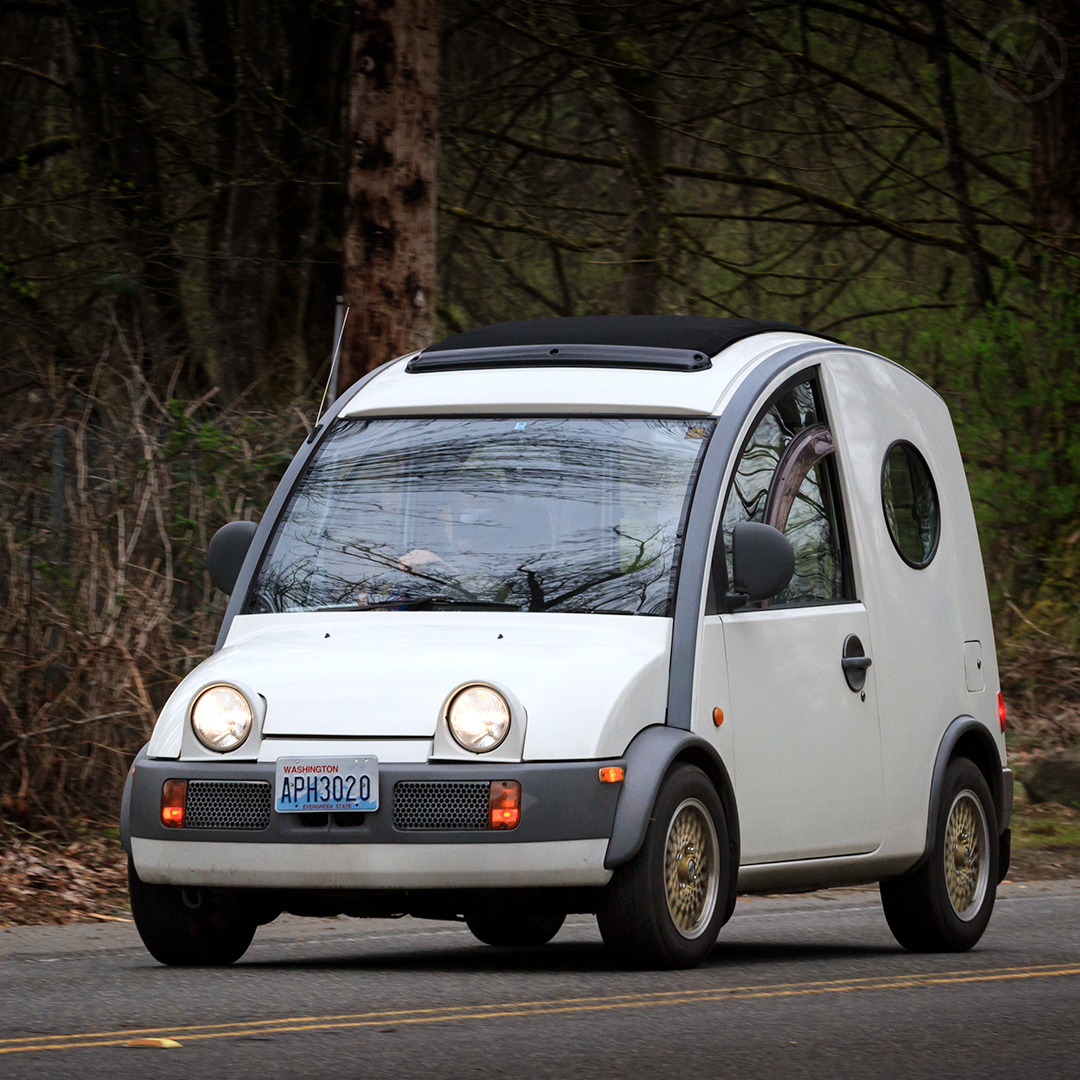
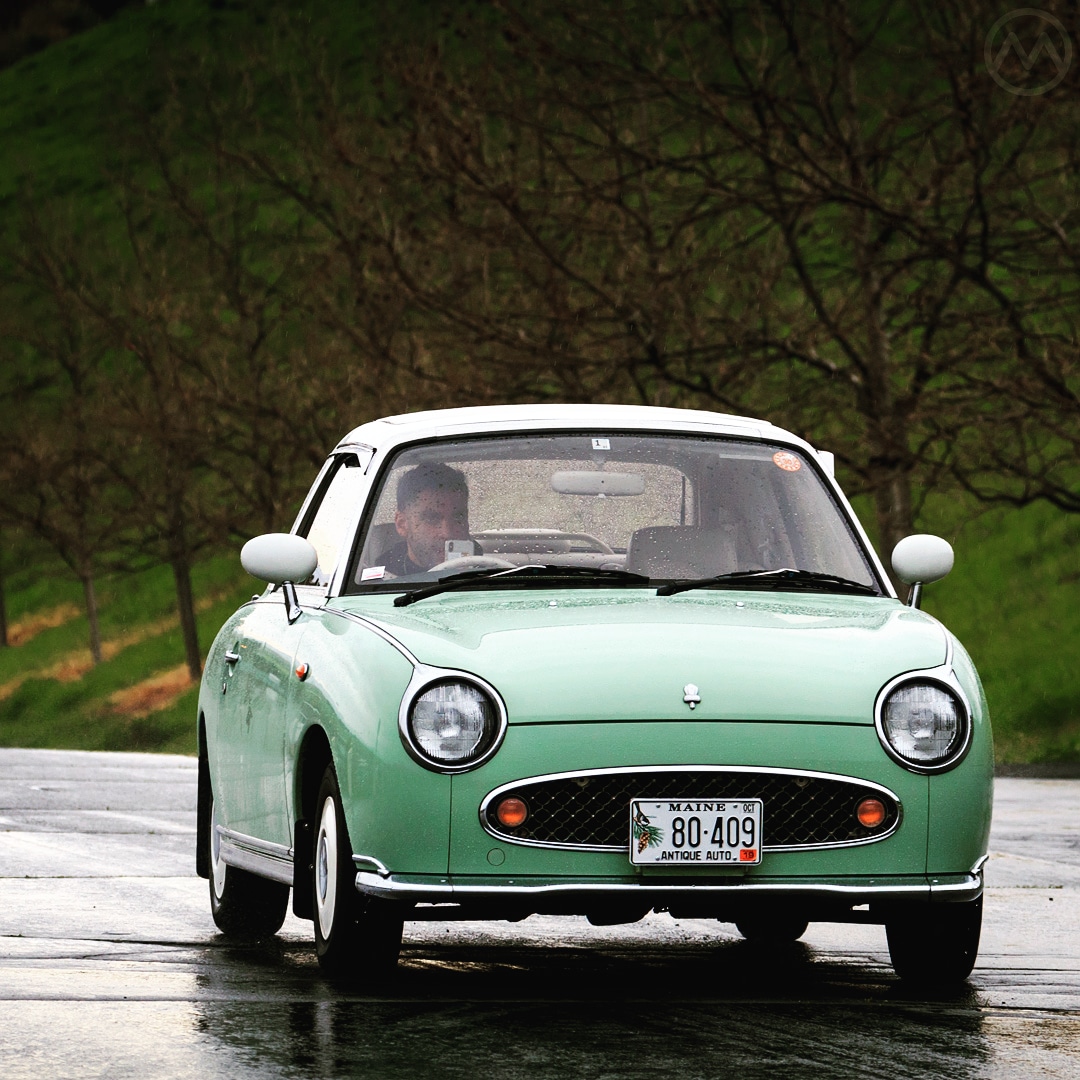
The Pike Factory
First, let’s clear up a misconception. All four Pikes drew their name from the “Pike Factory,” but there never was such an actual factory. The “factory” was in fact a public pseudonym for chief designer Sakai’s Water Group design house.
Sakai was not specifically a car designer before the Be-1. Born in Kyoto in 1947, he’d been a graphic artist as well as fashion and industrial designer. He did not even have a driver’s license when the first Pike project, the Be-1, began. His specialty was cool, and the limited-production cars he designed had that in spades.
It was Sakai’s task to make small cars for Nissan that were as trendy as the latest consumer electronics in 1980s Japan. That brief sounds surprisingly contemporary in these days of car companies trying to emulate tech giants, but Sakai also tapped into a very different phenomenon: the popularity of “contemporary classics” in Japan at the time.
In 1983, buyers could still purchase a brand new Citroën 2CV, Autobianchi A112, or classic Mini, and some young Japanese consumers were fascinated with these cars. While we tend to think of 1980s Japanese cars as high-tech and square-shaped, retro designs were really popular and Sakai and Nissan sought to tap some of that popularity.
The Pikes were meant to be niche cars, however, which would make designing unique platforms for each of them prohibitively expensive, even with limited production and buyer premiums. To make the economics work the cars would be built in existing factories where space could be found and all four would ride the same mechanical platform as the K10-series Nissan March, new in 1982.
While not exciting, the K10 March (called the Micra in many markets, including Canada) was rock reliable and a decent handler. Three of the four Pikes would use the 987-cc MA10 four-cylinder engine from the Micra, but the Figaro would get the Turbo version while the Be1 and Pao used non-turbos. The S-Cargo, nominally a commercial vehicle, used a 1.5-liter engine shared with the Sunny and Pulsar. The Be-1 and Pao could be had with manual transmissions, but the Figaro was automatic-only.
Debuting in dramatic fashion at the 1985 Tokyo show, the prototype Pike idea was the Be-1 concept. The public liked it so much that Nissan put it into production for 1987 almost unchanged and followed it up again with the Pao at the 1987 Tokyo show. The Pao went into production in early 1989, and both cars had waiting lists and sold out their production runs very quickly.
Thus attention turned to the next two cars, the funky 2CV-inspired S-Cargo van and the Figaro, crafted to be a two-seat lifestyle machine rather than a Mini or A112-like hatch.
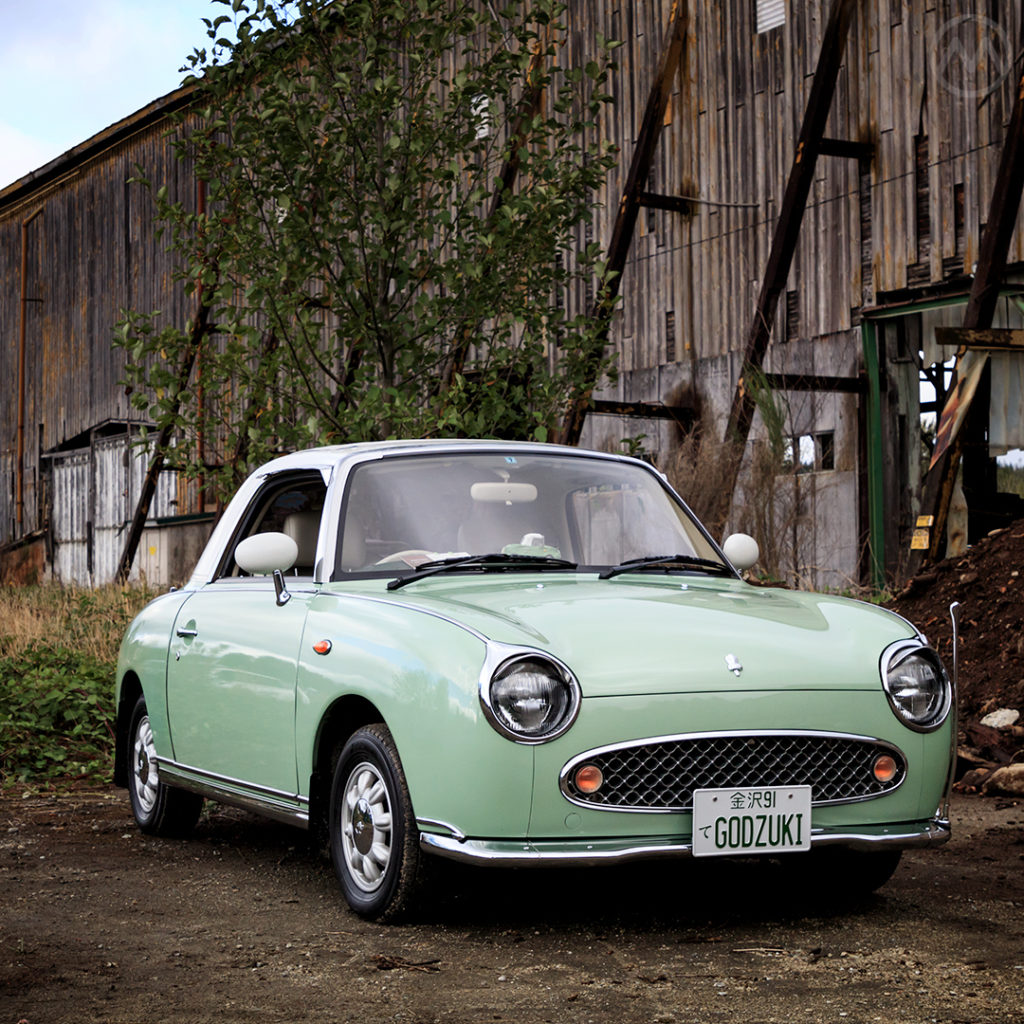
Tokyo, 1989
The concept version of the Figaro debuted at the blockbuster 1989 Tokyo Motor Show, held at the Makuhari Messe Convention Center. There it competed for attention with the Honda NSX, Toyota Sera and Celsior, Subaru SVX, and exotic concepts like the Ferrari Mythos. Then as now, exotics are cool but the Figaro was a crowd-pleaser extraordinaire.
Buyers would have to wait until 1991 to get one, but its adorable styling very quickly made it a desirable car far outside of the JDM audience it was intended for.
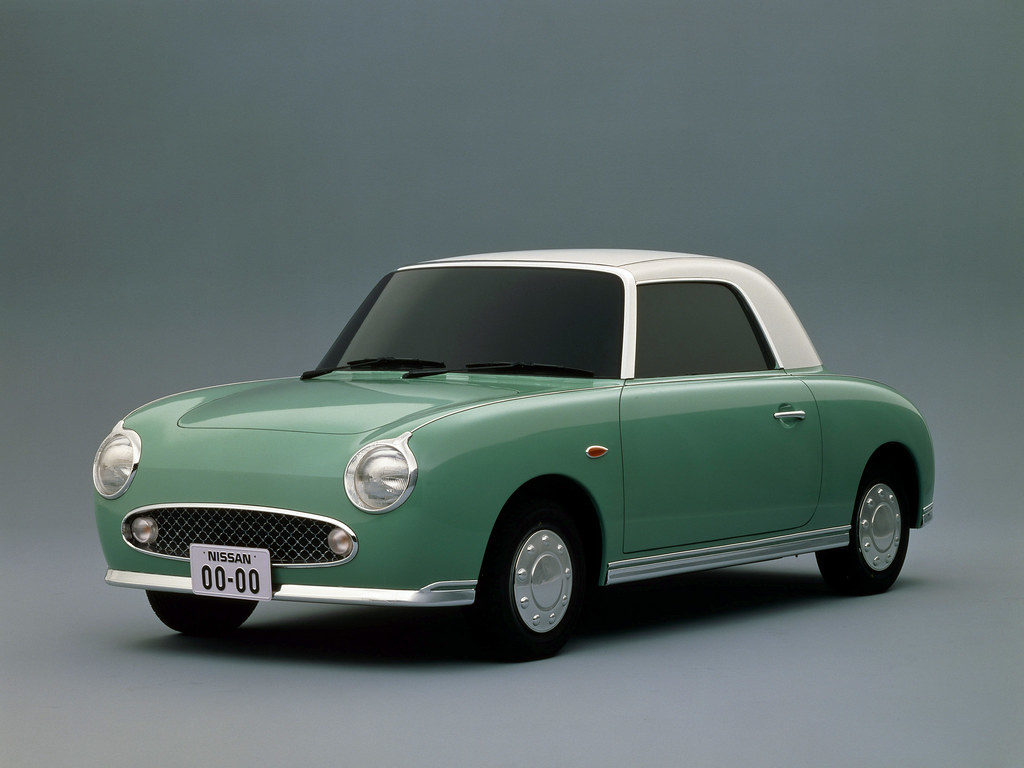
Sakai did not design cars alone. Other key figures in the Figaro’s design (and that of the Pao) were Shoji Takahashi and Jun Shimizu. The latter was one of Nissan’s own designers, and he was put into the group specifically to help bridge the gap between traditional Nissan execs (who would not necessarily have understood Sakai’s methods or the purpose of his decisions) and Sakai’s left-field Water Group of artists in their weird little office in Shibuya.
When it came time for finalizing the car, the detail work went to a Nissan internal team led by Yasuhiko Honma. Still, about 80% of the final product was just as the Water Group had intended.
Inside, the retro themes continued, with hard pieces that looked like Bakelite and old-look pieces made from modern materials. Sakai did not actually like the “retro” appellation, though there wasn’t any hiding it or the logic behind it. “Our secret weapon is the emotional matrix,” he said in a 1991 interview with design publication Blueprint.
Building the Nissan Figaro
As with previous Pikes, production would be limited and potential buyers would get their cars via a lottery. The car officially debuted on Valentine’s day, 1991, which is probably the most appropriate debut date ever.
Initially, a run of 8,000 cars was planned, but demand was heavy enough to justify two batches of 6,000 more after the first cars were gone. “Unfulfilled desires are hotter than satisfied ones,” Sakai opined. Part of the appeal of the Pikes was, after all, their exclusivity.
Very much a fashion accessory, it was only available in four pastel-hued fifties shades. These were Emerald Green, Pale Aqua, Lapis Gray, and Topaz Mist, though many were later repainted.
The Figaro was built by contractor Takada Kogyo. This company also made panels for the other Pikes and later built the Nissan Rasheen, another Sakai design. Takada also built the Subaru Vivio T-top and WRC Subaru Imprezas in the years following the Figaro.
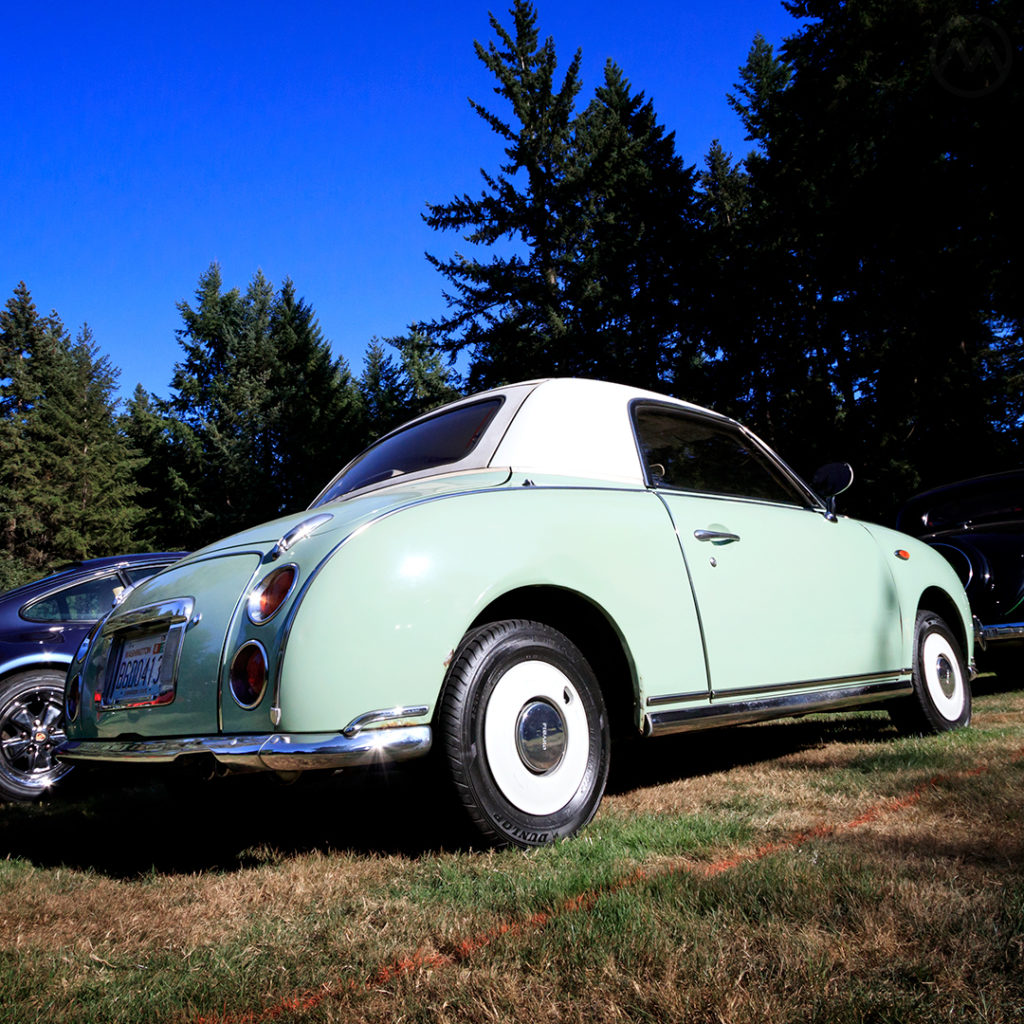
Everybody Loves the Figaro
Nissan could probably have sold thousands more Figaros even in the rapidly cooling early 1990s Japanese economy, but they couldn’t really expand the scale of production. By the time they might have thought too, Japan’s economy was beginning to sharply contract. The slowdown wouldn’t be fully felt until 1992, but the end of the boom times was also the end of the entire Pike project.
Despite the turbocharger, the standard three-speed automatic meant that the Figaro was never a particularly brisk performer. But that wasn’t what it was meant for. Like a big Detroit dreamboat in miniature, the Figaro was all about style and flash, and even while the brief window of production was still going there were enthusiasts in other countries clamoring to get one.
Not long after all the JDM buyers who wanted one had one, the Figaro started to gain popularity elsewhere, particularly in the United Kingdom and the Low Countries.
As soon as they arrived in the U.K., Figaros found favor with the style-conscious and famous. Princess Eugenie and Noel Gallagher had them, and then on TV (as seen on Elizabeth Slaydon’s The Sarah Jane Adventures). When the cars turned 25, a huge surge of interest began in the U.S., which previously couldn’t legally get the Figaro.
If you’d like to learn more about the Figaro (and don’t speak Japanese), the best place to go is the British-based Figaro Owners Club.

